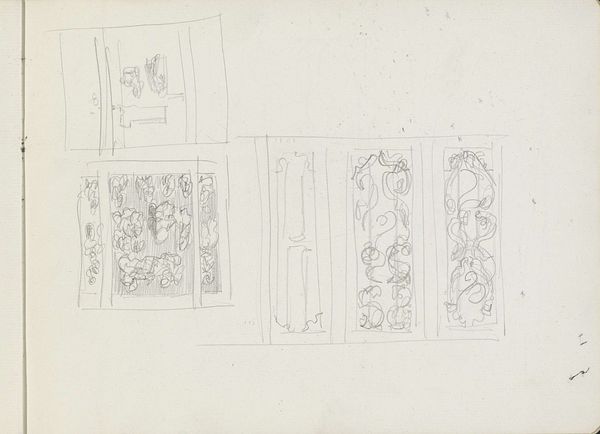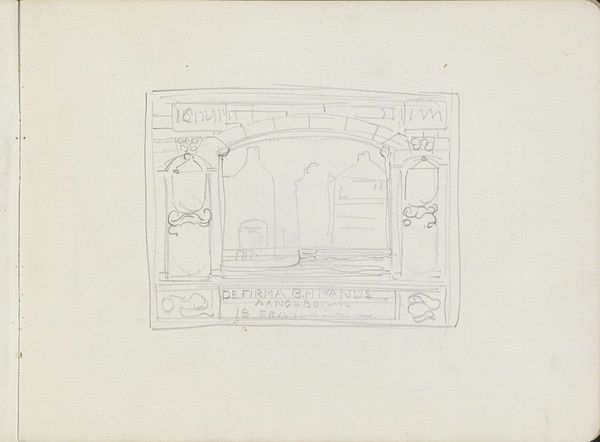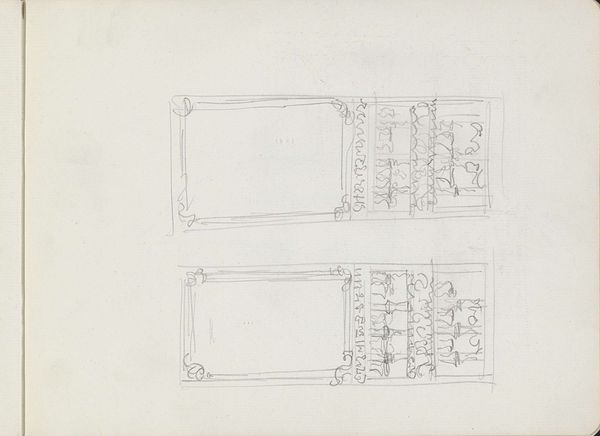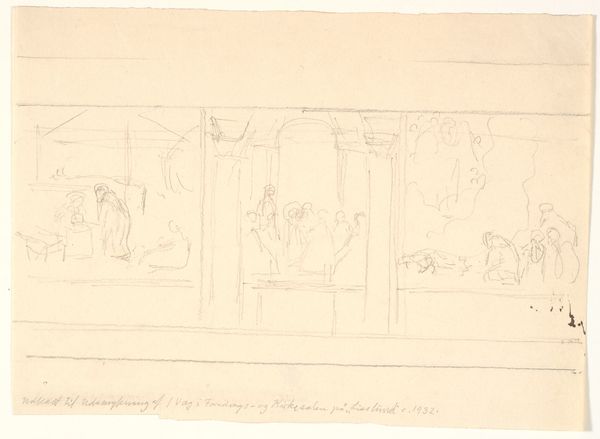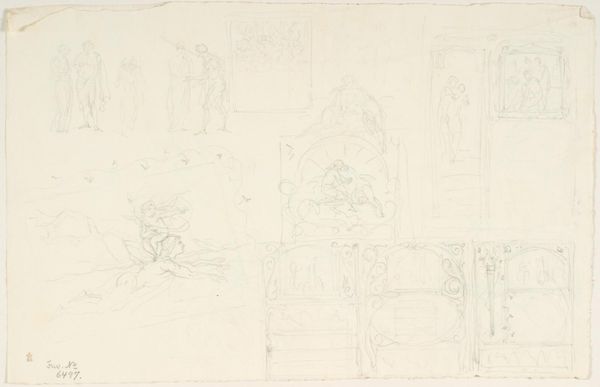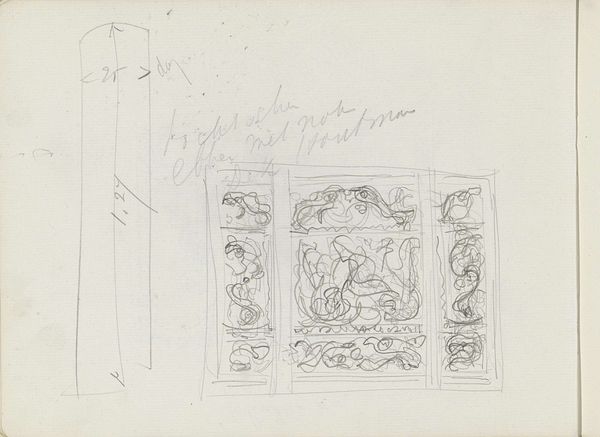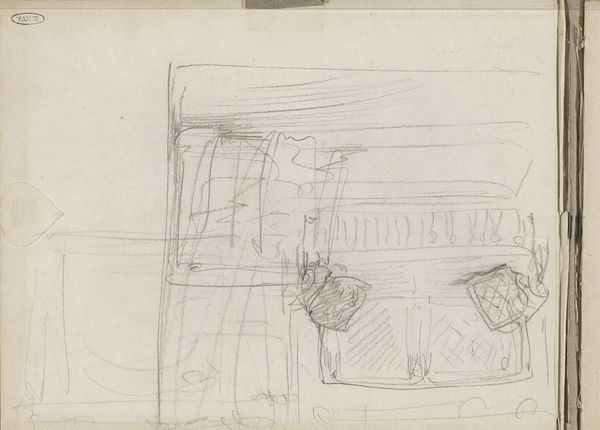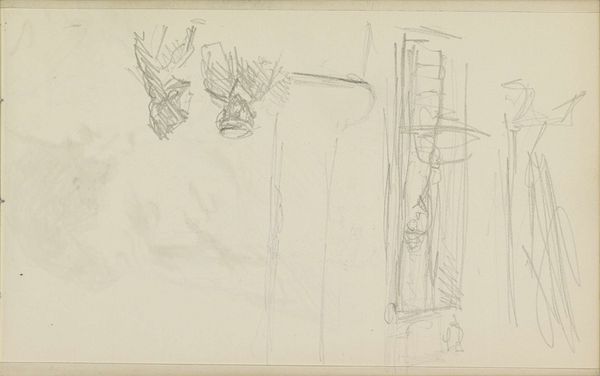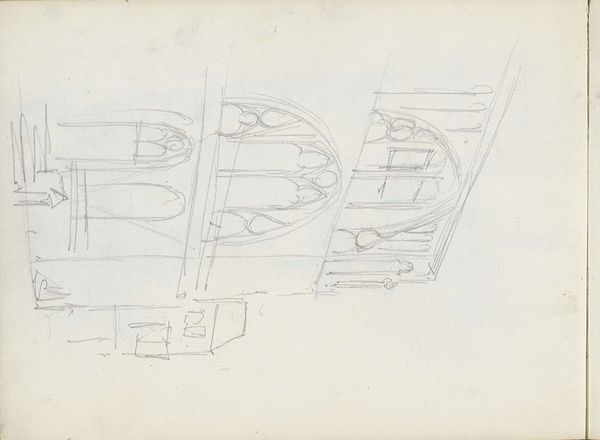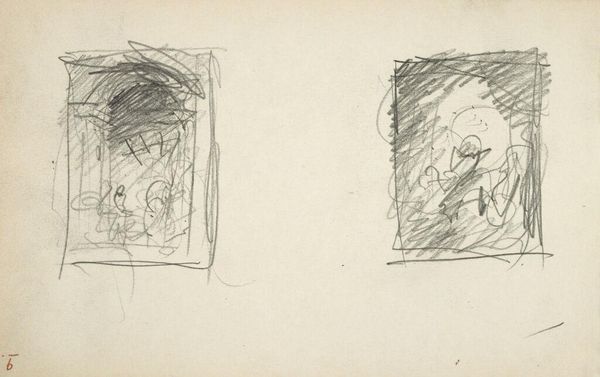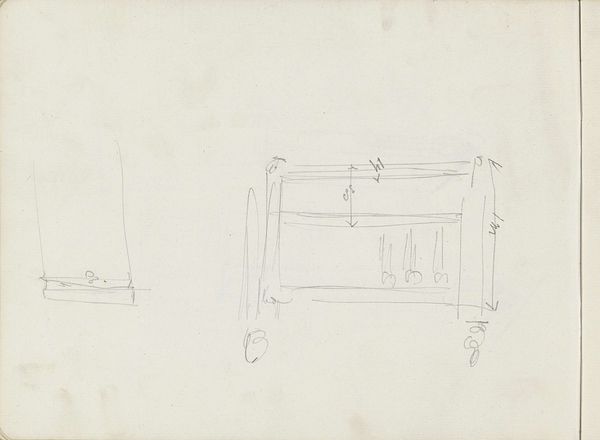
drawing, paper, pencil
#
drawing
#
aged paper
#
toned paper
#
light pencil work
#
art-nouveau
#
pencil sketch
#
old engraving style
#
hand drawn type
#
paper
#
personal sketchbook
#
idea generation sketch
#
geometric
#
pencil
#
line
#
sketchbook drawing
#
sketchbook art
Copyright: Rijks Museum: Open Domain
Editor: Here we have Carel Adolph Lion Cachet's "Ontwerpen voor wanddecoratie," dating from around 1905 to 1910. It’s a pencil drawing on paper, quite delicate and seemingly preliminary. The Art Nouveau style is evident, and I’m immediately drawn to how simple and somewhat understated the geometric shapes seem. What's your perspective on the artwork, and what catches your eye when considering it? Curator: What strikes me is how this piece embodies the intersection of art, craft, and industrial production that was central to the Art Nouveau movement. This drawing, rendered simply in pencil, is not precious in its materiality. Rather, it is a tool—a plan for something grander, perhaps executed in stained glass or wrought iron, requiring the skilled labor of artisans. We must remember the social context; there was a deep engagement in the means of production that elevates “design” beyond the canvas, engaging many laborers.. How does its apparent lack of finish change your perception of its status as a work of "art?" Editor: That’s fascinating. So you see the sketch almost as a document of the labor involved in creating decorative arts? I guess it highlights the often unseen effort behind the finished product. But the drawing itself also becomes a product then, wouldn’t you agree? Curator: Precisely! It forces us to consider the entire lifecycle of the piece. We see the initial thought processes of Cachet and recognize that it’s just a stage in something requiring many steps. In its incompleteness, the viewer is now confronted with a question of value – are we ascribing meaning simply to a drawing? Or to something much larger involving an entire labor class? Editor: So, rather than just seeing an elegant design, we're invited to think about the whole ecosystem of production. Curator: Precisely! Considering this work as it existed inside its original setting requires consideration for everyone involved, from idea to consumption. I suppose that allows a modern perspective to challenge the boundary that existed in art versus craft. Editor: I had never really considered design sketches from a materialist point of view, and how crucial they can be to understanding value chains. Thanks so much for pointing that out! Curator: It's a perspective shift, certainly. And I thank you for helping me see value beyond the obvious too.
Comments
No comments
Be the first to comment and join the conversation on the ultimate creative platform.
